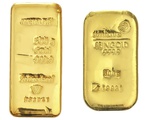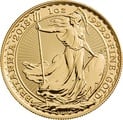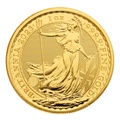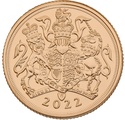Where is gold found?
Gold is found all over the world, and in places many may find surprising. It is typically found deep in the ground in quartz veins, or in river and stream beds where it has been eroded and settled over hundreds and thousands of years.
Despite being found in many places, gold is still an extremely rare metal. It is estimated to be about 0.005 parts per million of the Earth’s crust. That makes it one of the ten rarest naturally occurring elements in the world. It is this rarity – coupled with the difficulty of extraction – that ultimately makes gold so precious, highly valuable, and such a good investment.
It is contested as to where exactly the
gold found on Earth originates.
One popular theory suggests that most of the gold we mine today was the result of meteorite strikes thousands of years ago. The reason for this is that current models of the Earth’s formation suggest that any gold originally here would have melted, and sunk into the core with iron, rendering it unobtainable. Only by a new external source could gold have made its way to the mantle and crust.
Recent theories however have challenged this and suggested that gold may have been excreted from molten rivers beneath the mantle due to volcanic activity.
Where to find gold?
As mentioned above, you can find gold in small quantities almost everywhere. Land, oceans, you can even find gold in humans - in tiny quantities of course. It is believed that seawater contains as much as 70 million tons of gold and there may also be another 10 billion tons on the bottom of the ocean. However, to date, there is no economically viable means to extract these huge reserves.
On land, gold is found in very small amounts mixed with other materials, commonly quartz and alluvium. Experienced gold prospectors therefore look for signs of quartz and alluvium in rock formations when searching for gold. Deposits of gold come in either ‘lodes’ - underground veins, or in ‘placers’ – particles that have, over long periods, been eroded from their original place or lode. Gold mining operations therefore are classified as either placer or lode mining. Lode mining is also called hard rock mining. To learn more about the mining of gold, click here.
Once mined, large amounts of rock have to be processed to extract the gold from its ore. The three main methods of extraction use either mercury, cyanide or more recently via a process known as Elution. The use of mercury was banned in the 1960s but still continues in smaller illegal operations. Whatever the process used, it is difficult and both financially and environmentally costly.
When was gold discovered?
Where to find gold is a very old question and throughout history mankind has been searching for it. Some archaeologists believe that a mine in Sakdrisi, southern Georgia, dating back to the 3rd or 4th millennium BC is the world’s oldest gold mine.
In geographic terms gold is found all over the globe except in Antarctica. Today the three biggest individual mines are Witwatersrand Basin in South Africa, Irian Jaya in Indonesia and Carlin Trend, northeast Nevada. If Nevada were a country, it would rank fourth in the world in terms of total gold production. In fact, nationally, China is the largest producer of gold, followed by Australia, with its huge Fimiston ‘Super Pit’, and Russia comes third in world ranking.
To see more information on the world’s top gold producing countries, click here.
Gold has been mined in the UK for hundreds of years and was a key factor in the Roman occupation of Britain. The biggest concentrations were in Scotland, North Wales, and southwest England, with a record 3,500 kg mined between 1860 and 1909.
Though globally new veins are being discovered – and mining technology improved – it has been suggested that gold mining could become economically unviable by 2050. Consequently, growing importance is being attached to recycling, particularly of gold from industrial and technological uses.
Gold in Banks and National Reserves
Strangely, despite its rarity in the Earth’s crust, some argue that gold is actually plentiful. In 2017 it was estimated there was around 190,040 tons of gold existing above ground, with gold mining adding around 2,500 to 3,000 tons to this total every year. Industrial demand, not including jewellery, amounted to just 331 tons a year. Since gold is virtually indestructible this means there are huge and growing reserves.
This, though, ignores the fact that government central banks, traditional banks, and corporations stockpile
huge gold reserves
which greatly curtails supply. According to 2019 World Gold Council figures, the United States has the largest reserves, with over eight metric tons and Germany is second with over three metric tons. These are followed by Italy, France, Russia and China with the International Monetary Fund holding nearly three metric tons. Another answer then to, ‘Where is gold found?’ could be, ‘in national reserves'.
Gold in investment portfolios
India has the highest private ownership of gold. On average Indians spend over eight percent of their income on gold jewellery and coins. In the west, according to World Gold Council figures, Germany has the highest number of private investors. Amid fear of a Euro devaluation, German private investors bought 100 tons of gold in 2016 and continue to invest heavily.
Physical gold has historically held its value, its price does not move as other investments, like stocks and shares, and its value cannot be controlled by banks and financial bodies. For these reasons many financial advisors recommend allocating three to twenty percent of an investment portfolio to gold as a safe haven in difficult times, a hedge against movements in other investments and as a method of diversification.
With growing uncertainty around the British economic future, BullionByPost’s huge selection of bars and coins offer an easy way to invest and protect your wealth with physical gold bullion.
- How To Buy Gold
- How to Buy?
- Payment Options
- Delivery Options
- Gold Storage
- Storage at Brink's
- Gold Investment Guide
- Why buy gold?
- Is gold a good investment?
- Why physical gold?
- Best time to buy gold?
- Gold bars vs coins?
- Gold vs Silver
- Gold - Silver Ratio explained
- VAT on bullion
- CGT on bullion
- Legal tender coins
- Top 5 Gold Investments
- Top 5 Silver Investments
- Gold vs ISAs
- Gold vs Buy-to-Let
- Gold vs FTSE 100
- Gold vs Bitcoin
- Where to buy gold?
- Why buy from us?
- Where to sell gold?
- Coin Shops
- Gold Price Forecasts
- Top 10 Gold Producers
- Top 10 Gold Reserves
- Gold Britannia vs Sovereign
- Britannia coin designs
- Sovereign coin designs
- Sovereign Mintages
- Sovereign mint marks
- British coin specs
- What is a proof coin?
- Royal Mint bullion
- The Queen's Beasts
- Royal Mint Lunar Coins
- Bullion Refiners
- British coin mints
- Krugerrands
- Gold Tola - India & Pakistan
- Bullion Index











